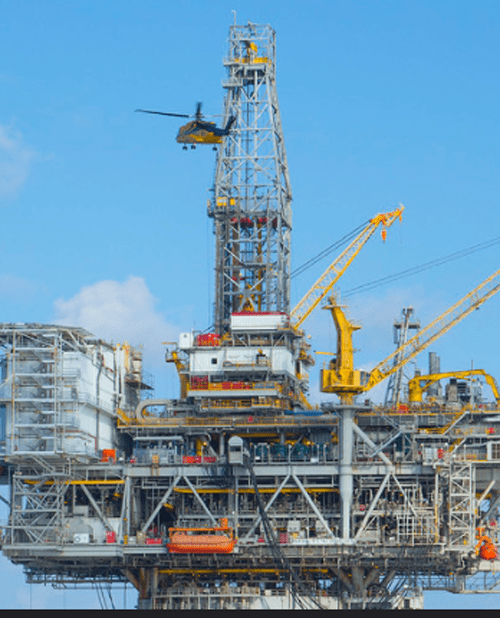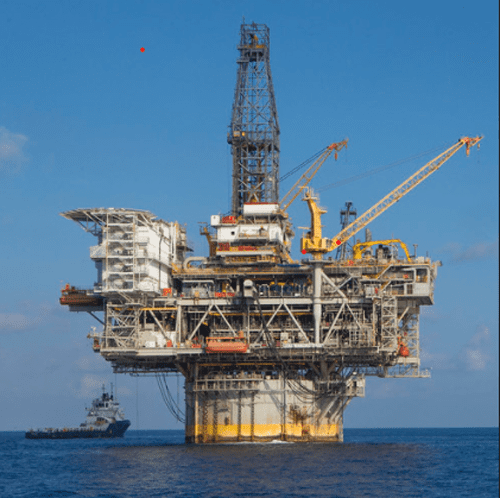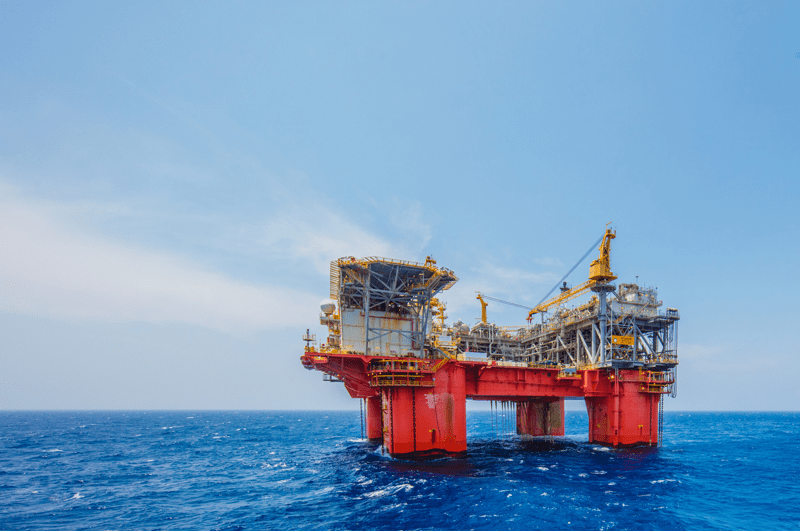For those who reside along the Gulf Coast of the United States, hurricane preparedness is a term that yields anxiety and reluctance. It is, however, a necessary evil mandated simply by proximity to the tropical battlegrounds of the Gulf of Mexico (GOM). Sharing the stress of hurricane season, offshore oil and gas companies who populate the Gulf with assets must be keenly aware of the tropical weather season and be decisive in planning and evacuating structures when necessary.
Regulated by the Bureau of Safety and Environmental Enforcement (BSEE), companies who perform operations within the offshore industry must meet Safety and Environmental Management Systems (SEMS) requirements. Of the various provisions required, any company performing offshore work must be equipped with emergency response and control procedures. Guidelines for addressing hurricane threats are rooted in emergency response plans.
With assets stationed in the GOM, hurricane planning and preparedness are a major role and concern of bp Interim Manager of Crisis and Continuity Management, Carlton Landry. Each asset has its own specific Emergency Action Plan, or EAP. bp possesses specific procedures that have been developed through meticulous planning for addressing approaching tropical weather.
Many news reports depict Gulf Coast residents initiating their evacuation strategies when a hurricane or other tropical weather is as close as 24 hours from making landfall. bp, however, engages its plans far sooner than that. Hurricanes and tropical activity are monitored by the bp Crisis and Continuity Management Team. Additionally, they consult with meteorology professionals to determine potential path and impact.

“A storm doesn’t have to have entered the Gulf before we take action,” says Landry. “Safety is our absolute highest priority. Shutdown time is what is considered. We make sure we have enough time to shut down the facility and safely evacuate personnel.”
When the decision is made to evacuate personnel, both air and vessel modes are utilized. According to Landry, transportation modes are highly dependent upon weather activity at the time of evacuation.
Besides offshore asset owners, contractors of the industry must follow SEMS requirements as well and develop emergency response plans. Collaboration is essential because contractors typically have their own safety programs and policies for working offshore. The question, therefore, may arise of which EAP to follow.
“All personnel are to follow the facility EAP,” says Landry. “These requirements are made known to individuals through a facility orientation.”
According to Landry, while drilling and intervention vessels can move safely out of tropical activity’s path, stationary production facilities present a different challenge. bp’s production facilities may call for the evacuation of over 750 individuals. Transporting personnel off those facilities and returning them safely shoreside is an efficient and well-organized process. The Person on Board (POB) Coordinator initiates a pre-planned process when evacuation orders are given. A main factor applied to the process is to max out all evacuation craft.
“Third-party or contract personnel are evacuated first from bp assets with facility leadership being the last to go,” Landry explains. “We have access to three Sikorsky S-92 (18-passenger) helicopters and have always had enough to meet our needs.”
Beyond the priority of personnel safety, bp must also take care to maintain operational integrity, not for financial factors, but instead for environmental concerns and preservation. Constructed to withstand hurricane force winds, damage from storms is typically minimal. Although this is a positive factor, Landry says that production is still shut-in when tropical force conditions present themselves.
Although bp’s team has developed a carefully designed plan of preparedness and action, support entities are available should their presence be needed. Landry states that once bp has initiated its evacuation process, the team immediately notifies BSEE and the Coast Guard in order to provide and maintain clear communications throughout the endeavor.
According to Captain Matthew Denning of the U.S. Coast Guard Eight District, evacuation plans must be approved. Any significant changes made afterwards must also be met with approval.

In 2014, a “report by exemption” change was implemented and carried through the 2020 hurricane season. The U.S. Coast Guard Eight District Gulf of Mexico Outer Continental Shelf Marine Safety Information Bulletin (MSIB) 20-04 requests that all manned offshore facilities and Mobile Offshore Drilling Units (MODUs) relay when any personnel who were intended to be included in evacuation measures are stranded on board. It also requests notification of any MODU that is unable to relocate to avoid approaching storms. Captain Denning states that oil and gas companies are required to alert BSEE when evacuation plans are enacted and that MSIB 20-04 was specifically designed to reduce duplication of reporting requirements in accordance with 30 CFR 250.192.
“We want to hear if evacuation plans are unable to be carried out,” says Captain Denning. “We want to offer our immediate assistance and help them in any way possible.”
When the hurricane or tropical system threat has dissipated, companies such as bp activate their return-to-work plans. Landry states that an initial flyover is conducted when it is deemed safe to do so. This allows for a damage assessment to be determined.
“Thirty-six individuals land on the asset to restore its capability and check for damage,” Landry explains. “Their main goal is to establish habitability prior to allowing non-essential personnel onboard.”
bp’s team has developed a course of action for re-manning offshore assets post tropical threat. Order designation is determined by contractor need with those performing the most critical work returning sooner than others.
SIMOPS is a well-known term used regularly in the offshore vocabulary. Simultaneous operations (SIMOPS) are simply defined as two operations that occur at the same time and within the same location. Industry standards specify good communication between the parties conducting the work. True to form, evacuation procedures within the GOM can be an effort of simultaneous operations. Landry says that although each offshore asset owner has its own EAP, discussions take place to compare notes.
Hurricane and tropical threat evacuations require great thought and are a major responsibility to the personnel tasked with enacting the measures. Executing plans and carrying them out can be stressful; remaining calm and deliberate is key.
“Making decisions 100 hours out based on storm predictability is probably the greatest challenge of the evacuation process itself,” says Landry.
According to Landry, each hurricane season offers lessons that can be used for improvement. His team reviews bp’s seasonal activity at the end of every year to identify success factors and determine if changes are necessary.
“No storm is treated differently,” says Landry.
BSEE’s November 4, 2020, Hurricane Zeta Final Report indicated that 23 production platforms had been evacuated. This accounts for 3.58 percent of the 643 manned platforms occupying the Gulf of Mexico. These measures resulted in 48,092 BOPD (barrels of oil per day) shut-in. Additionally, 89.28 MMCFD (million standard cubic feet per day) of gas was also shut-in. These statistics depict an image of the Gulf’s large size and its contribution to oil and gas production.
The BSSE report also states, “From operator reports, BSEE estimates that 2.6 percent of the current oil production in the Gulf of Mexico has been shut-in. BSEE estimates that approximately 3.29 percent of the natural gas production in the Gulf of Mexico has been shut-in. The production percentages are calculated using information submitted by offshore operators in daily reports. Shut-in production information included in these reports is based on the amount of oil and gas the operator expected to produce that day. The shut-in production figures therefore are estimates, which BSEE compares to historical production reports to ensure the estimates follow a logical pattern.”
Captain Denning applauded the end of the 2020 hurricane season and states that a successful outcome is due to a collaborative effort between the oil and gas companies, BSEE and the Coast Guard.
“We never received any reports that evacuation measures could not be met,” says Captain Denning.
Reflecting on his past experiences with hurricane preparedness, Landry believes Hurricane Laura of 2020 will stand out. The enormous wind field of the storm and its continually changing track presented a great challenge for him and his team.
“This year’s hurricane season was unprecedented when you consider all of the circumstances,” says Landry. “The season was record-based with the number of named storms we experienced. On top of that, add the COVID-19 prevention measures before anyone can even go out to the asset. It made for great challenges this year, but this is what we train for and we couldn’t be prouder of our team’s dedication and resilience.”
Photos courtesy of bp. Headline photo – bp Atlantis production platform.
Nick Vaccaro is a freelance writer and photographer. In addition to providing technical writing services, he is an HSE consultant in the oil and gas industry with twelve years of experience. Vaccaro also contributes to SHALE Oil and Gas Business Magazine, American Oil and Gas Investor, Oil and Gas Investor, Energies Magazine and Louisiana Sportsman Magazine. He has a BA in photojournalism from Loyola University and resides in the New Orleans area. Vaccaro can be reached at 985-966-0957 or nav@vaccarogroupllc.com.







